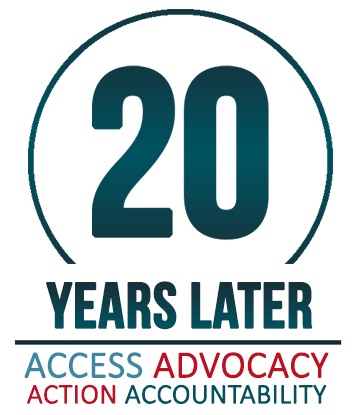Twenty Years Later Blog Series: Introducing the Eighth Principle of the Imperatives for Quality Cancer Care
Over the course of 2015, NCCS and a diverse group of guest contributors will revisit the Imperatives for Quality Cancer Care as published in 1995 and evaluate progress made to date in achieving the principles proposed and ensuring that they guide the cancer care experience. The eighth principle of the Imperatives for Quality Cancer Care states, “Systematic long-term follow-up should generate data that contribute to improvements in cancer therapies and decreases in morbidity.”
In 2015, an estimated 1,658,370 individuals will be diagnosed with cancer in the United States. About two thirds of those individuals will live more than five years after their initial diagnosis. This relative survival rate will continue to grow, as more and more people are moving beyond active cancer treatment or living with cancer as a chronic illness.

Read more posts from our “20 Years Later” series.
Following active treatment, many survivors speak candidly about their “new normal,” a term that encompasses the emotional and physical effects of their treatment that follow them at points of transition. Although each experience is unique, some common side effects that cancer survivors face include cardiotoxicity (or heart damage), cognitive effects, fatigue, pain, fear of reoccurrence, and lung dysfunction. Symptoms may persist for years after treatment, or develop slowly over time. Of additional concern for all cancer survivors is the possibility of a secondary cancer. Recent evidence states that nearly 1 in 5 cancer diagnoses occurs in an individual with a previous diagnosis. These cancers can be the result of genetic predisposition, lifestyle or environmental factors, or they can be related to the initial cancer treatment. With uncertainties about the causes of many secondary cancers, more research is needed to determine the role of each of these factors.
Last month in this blog series, pediatric oncologist, researcher, and cancer survivor Dr. Greg Aune noted that much of our understanding of long and late-term effects of cancer treatment comes from retrospective studies that focus on correlation of health issues with specific cancer treatments. In this way, data culled from long-term follow-up has already played a significant role in identifying many debilitating or persistent issues in cancer survivorship. Calling for more preclinical research into how cancer treatment damages healthy tissue and leads to post-treatment effects, he notes that much more can be done to address this gap in our understanding of cancer treatment. More still can be done to study long-term survivorship.
Some of the original actions suggested in the Imperatives for Quality Cancer Care call for building collaborative relationships with physicians, nursing, psychosocial, consumer, and funding groups to study and support work in the area of long-term and late effects (including the development of practice guidelines); encouraging Congress and the National Cancer Institute to dedicate funds for research on cancer survivorship; extending clinical trial evaluations to include long-term follow-up and quality of life measurements; educating private foundations about the need for funding for survivorship-related research; providing access to survivor groups who might participate in studies and offer suggestions and recommendations to researchers; incorporating long-term outcomes into design of clinical trials; and educating primary care physicians about special needs of long-term survivors.
This month, we’ll be looking at several topics related to this issue, including how the Childhood Cancer Survivors Study informed the care of children with cancer, a discussion of common late and long-term issues in cancer survivorship, and a look at how we are using data and technology to get the right treatment to the right patient at the right time.




